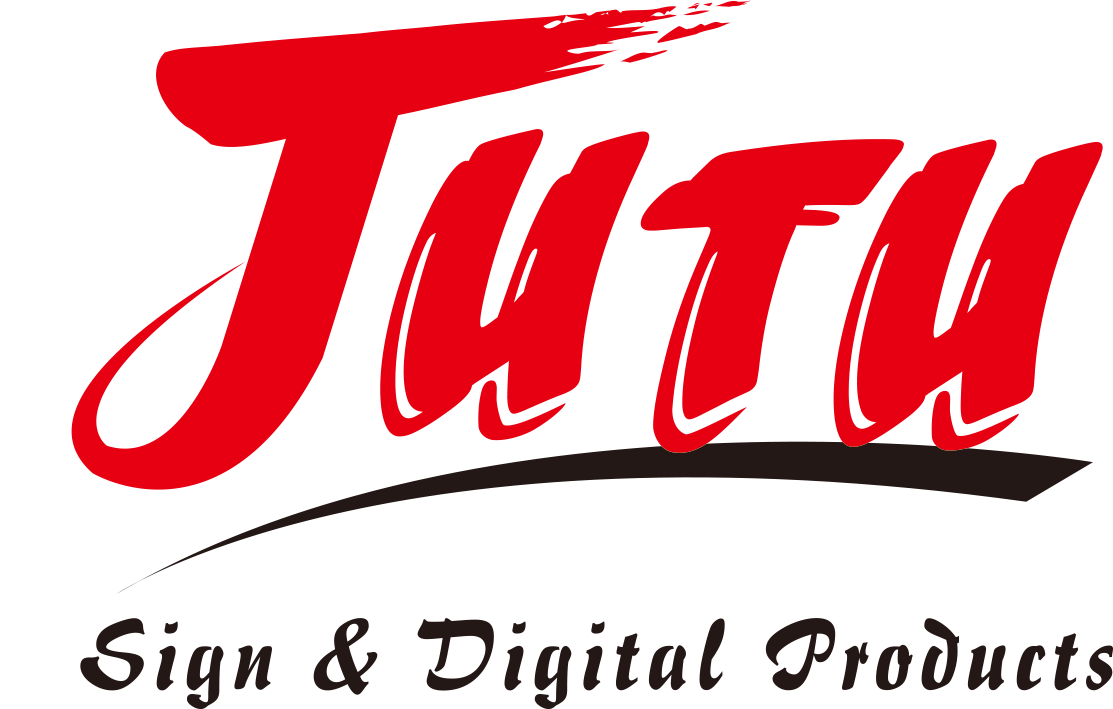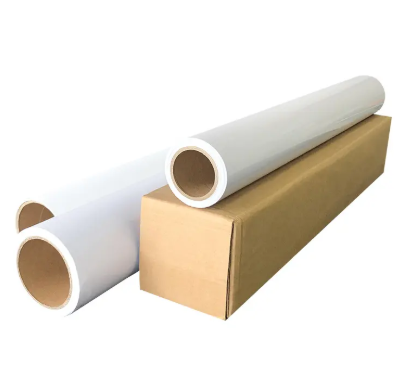Key Components and Types of Self-Adhesive Vinyl
Understanding Vinyl Composition: Layers and Properties
Self-adhesive vinyl is structured into three main layers: the face film layer, adhesive layer, and release liner. The face film, usually made from polyvinyl chloride (PVC), provides durability and color to the vinyl. Its flexibility makes it suitable for various applications, while the adhesive layer ensures the vinyl clings to surfaces with varying strengths depending on its intended permanence. The release liner, often a paper or film, protects the adhesive until the vinyl is ready for application. The quality of these layers impacts the vinyl's resistance to environmental elements. Typically, self-adhesive vinyl measures a certain thickness, which affects its application quality and durability, ensuring that it withstands wear and tear while remaining easy to apply. Understanding these components can help you choose the appropriate type of vinyl for your project needs.
Calendered vs. Cast Vinyl: Core Differences
Calendered vinyl, created by heating and rolling the vinyl through presses, is generally cost-effective, making it ideal for short-term applications like promotional banners and temporary signage. Its durability is moderate, with a lifespan ranging from 3 to 6 years, depending on environmental exposure. Cast vinyl, on the other hand, is produced by pouring liquid vinyl onto a casting sheet and then heated. It offers superior durability and flexibility, often used in vehicle wraps and intricate designs due to its capacity to conform to irregular surfaces. Cast vinyl is more expensive but proves cost-effective over time for projects requiring long-term application, typically lasting between 5 to 12 years. These distinctions are crucial for choosing the right type for your specific use case.
Monomeric vs. Polymeric Vinyl: Durability and Uses
Monomeric and polymeric vinyl are primarily differentiated by their durability and flexibility. Monomeric vinyl tends to be less stable, with higher shrinkage rates, making it suitable for indoor applications and short-term usage, with warranties often up to three years. Polymeric vinyl is more durable, with added plasticizers that enhance flexibility and resistance to shrinkage, extending its use for outdoor settings and medium-term applications, typically supported by a warranty of five to seven years. This longevity is crucial for projects exposed to diverse weather conditions. Expert insights suggest that while monomeric vinyl is cost-efficient for temporary projects, polymeric provides a durable solution for more demanding environments, ensuring your investment is well-aligned with project needs.
Specialty Self-Adhesive Vinyl for Unique Applications
Reflective and Fluorescent Vinyl for Safety and Visibility
Reflective and fluorescent vinyl are essential in ensuring safety and visibility. These materials are used primarily in creating safety signs, road markings, and emergency notifications, where increased visibility is crucial. Reflective vinyl can bounce back light towards its source, making signage visible even in low-light conditions, such as nighttime or during foggy weather. Fluorescent vinyl absorbs light and releases it, providing bright, attention-grabbing colors. These properties significantly reduce accident rates by making critical information more noticeable to drivers, pedestrians, and emergency personnel.
Metallic and Holographic Vinyl for Decorative Projects
Metallic and holographic vinyl offer a distinctive aesthetic appeal for various commercial and creative projects. Their shimmering, eye-catching finishes make promotional items, event decorations, and product displays stand out. Metallic vinyl mimics the look of metals like silver and gold, providing a luxurious touch, while holographic vinyl creates captivating, multi-colored light effects. These materials have become trends in consumer markets, with a growing demand for unique, visually striking designs. Incorporating them can significantly enhance the visual impact of Products and event decor, aligning with consumer preferences for personalized and stylish presentations.
Glow-in-the-Dark and Heat-Transfer Vinyl
Glow-in-the-dark and heat-transfer vinyl serve unique functional and creative roles. Glow-in-the-dark vinyl adds safety elements to various applications by emitting light in darkness, ideal for emergency pathways or nighttime outdoor activities. This material is also popular in children's rooms and party decorations for its fun and whimsical appeal. Heat-transfer vinyl, used predominantly for custom apparel and textile prints, involves transferring designs onto fabric using heat and pressure. This type of vinyl enables the creation of personalized clothing items, such as T-shirts and hats, enhancing fashion designs with custom logos and graphics. These specialty materials are widely praised in case studies for their adaptability and inclusion in innovative projects.
Choosing the Right Self-Adhesive Vinyl for Your Project
Selecting the appropriate self-adhesive vinyl for your project involves understanding the environmental demands of indoor versus outdoor use. The key factors include weather resistance and product lifespan. Outdoor vinyl must withstand environmental elements like UV rays, extreme temperatures, and moisture, impacting its durability and performance over time. Materials with high UV resistance and temperature tolerance are essential for outdoor applications, where longevity is crucial. Experts recommend using specialized outdoor vinyl for projects exposed to harsh climates, while indoor vinyl is more suitable for temperature-controlled environments. Understanding these distinctions ensures that you choose a vinyl type that best suits your needs and conditions.
Differentiating between permanent and removable adhesives is vital when considering the compatibility of self-adhesive vinyl with various surfaces. Permanent adhesives offer strong bonding, ideal for applications requiring durability, such as long-term outdoor signs. In contrast, removable adhesives provide greater flexibility for temporary applications, allowing for clean removal without leaving residue. The choice between adhesive types affects adhesion strength and suitability for different surfaces like glass, metal, and plastic. Consulting guidelines from adhesive manufacturers can help determine the right adhesive for your specific project needs and surface types.
The choice between glossy and matte finishes in vinyl projects influences both aesthetic appeal and functionality. Glossy finishes offer a shiny surface that reflects light, making colors pop, while matte finishes deliver a subtle, glare-free look that suits indoor applications. Consider factors like texture, light reflection, and desired visual outcome when selecting the finish for your project. Expert opinions suggest that glossy finishes are often preferred for vibrant visuals, whereas matte finishes are favored for creating a sophisticated look with reduced glare. Understanding consumer preferences and applications helps in selecting the appropriate finish for your vinyl project.
Application Techniques and Maintenance Best Practices
Surface Preparation and Installation Steps
Achieving optimal adhesion and enduring results begins with meticulous surface preparation. Ensuring the application surface is clean, dry, and smooth is crucial for the self-adhesive vinyl to adhere effectively. A step-by-step installation process involves cleaning with a mild detergent, drying thoroughly, and gently sanding if the surface is glossy. Industry experts suggest a test application on a small area to foresee any compatibility issues. Aligning the vinyl correctly is vital; and using a tape hinge technique can aid in this. Carefully applying pressure with a squeegee smooths the vinyl and enhances adhesion. Recommendations from professionals stress patience and precision in this process for the best outcomes.
Tools for Smooth Application: Squeegees and Heat Guns
Essential tools such as squeegees and heat guns play a vital role in achieving a professional finish. Squeegees are used to apply even pressure, helping to eliminate bubbles and ensuring a smooth surface. Heat guns are particularly useful in applications where the vinyl needs slight stretching or additional adhesion around curves or irregular surfaces. They help to activate the adhesive, allowing for repositioning and sealing the vinyl's edges. Expert installers advise applying a gentle heat with caution, as too much can potentially distort the vinyl. A combination of these tools, handled with proper technique, ensures a flawless application.
Cleaning and Long-Term Care to Prevent Damage
Proper cleaning and maintenance practices are crucial to preserving the appearance and adhesion of self-adhesive vinyl over time. It's recommended to use a soft cloth and a mild soap solution for routine cleaning, avoiding harsh chemicals that may degrade the adhesive or finish. Regular inspections for signs of wear, peeling, or dirt accumulation can prevent long-term damage. Authorities in material care emphasize avoiding abrasive cleaning pads and harsh weather exposures, which can significantly reduce the lifespan of vinyl applications. Adopting these long-term care practices ensures the vinyl maintains its intended visual appeal and function throughout its lifespan.
FAQ
What are the main layers of self-adhesive vinyl?
Self-adhesive vinyl consists of three primary layers: the face film, adhesive layer, and release liner.
How do calendered and cast vinyl differ?
Calendered vinyl is cost-effective and suitable for short-term applications, while cast vinyl is more durable and flexible, making it ideal for long-term use and intricate designs.
What is the difference between monomeric and polymeric vinyl?
Monomeric vinyl is less stable and better suited for indoors, whereas polymeric vinyl offers enhanced durability and is more suitable for outdoor environments.
When should I use reflective or fluorescent vinyl?
Reflective and fluorescent vinyl are best used for safety and visibility purposes, such as in road signs and emergency notifications.
How do I maintain self-adhesive vinyl?
Regular cleaning with mild soap, avoiding harsh chemicals and abrasive pads, ensures the longevity and appearance of self-adhesive vinyl.

